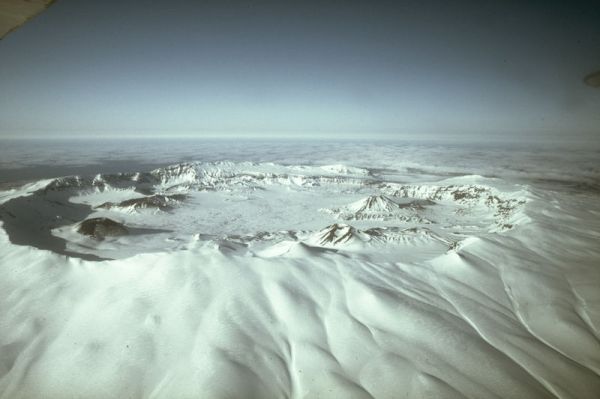
As we've seen recently, scientists are always coming up with new ways to date historical events and artifacts, sometimes with amazing accuracy. Finding the exact dates for natural occurrences can help us understand other events that we have records for. For example, could a volcano on the other side of the world have influenced the rise of the Roman Empire? By analyzing atmospheric chemicals left in an ice core, an international team of scientists have pinpointed a climactic change left by a volcanic eruption.
The team found that volcanic eruptions occurred in 45 B.C. and 43 B.C., sandwiching the year of Julius Caesar’s assassination. The team also found tephra—rocky detritus spewed by volcanoes—that carries a geochemical fingerprint, which allowed them to home in on a culprit.
As it turned out, the volcano that caused all the ruckus was a massive one, a world away: Okmok, far into the North Pacific Ocean in the Aleutian Islands, nearly 6,000 miles from Rome. The impact of the eruption would have been huge to be felt in the Mediterranean, McConnell says—not exactly a “supervolcano,” but something along the lines of the 1815 eruption of Mount Tambora in Indonesia, which caused the “year without a summer” in Western Europe. Knowing the source of the spewage, the researchers were then able to estimate what impact the eruption would have had in Europe by tracking variation in its fallout.
Read about the research and the findings at Atlas Obscura.
(Image credit: United States Geological Survey)





